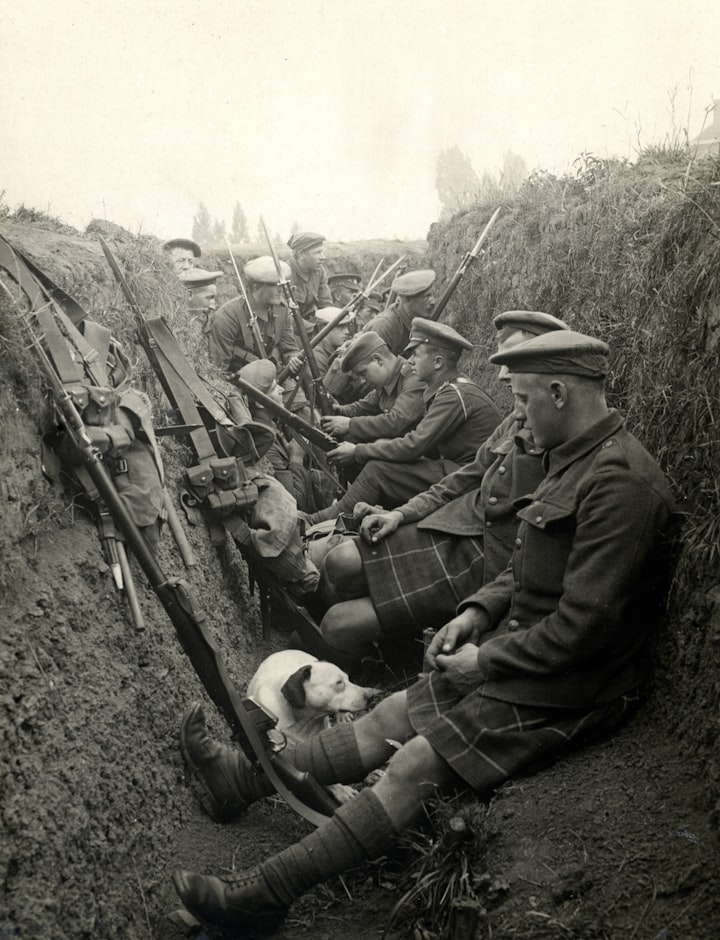THE GREAT DEPRESSION [1929~1939]
"The Rise and Fall: Understanding the Great Depression"
![THE GREAT DEPRESSION [1929~1939] THE GREAT DEPRESSION [1929~1939]](https://images.unsplash.com/photo-1611987101905-f4c605a8f805?fit=max&fm=jpg&ixid=M3wzNTY3MHwwfDF8YWxsfHx8fHx8fHx8MTY4NzMxMzAzNXw&ixlib=rb-4.0.3&q=75&w=720&utm_medium=referral&utm_source=vocal.media)
The Great Depression was a severe worldwide economic downturn that lasted from 1929 to the late 1930s. It was the most extensive and longest-lasting economic crisis in modern history. The Depression originated in the United States but quickly spread to other countries, causing a global economic slump.
The Great Depression was a severe economic crisis that occurred in the 1930s, primarily affecting the United States but also having a global impact. It was one of the most significant economic downturns in history and lasted for about a decade, starting with the stock market crash of October 1929 and continuing until the late 1930s or early 1940s.
There were several factors that contributed to the onset and severity of the Great Depression. One key factor was the speculative stock market bubble that formed in the late 1920s. Stock prices rose to unsustainable levels, and when the market crashed in October 1929, it triggered a chain reaction of events that led to a collapse in economic activity.
The crash of the stock market had a profound impact on consumer confidence and investment. Banks failed, businesses closed down, and millions of people lost their jobs. The unemployment rate skyrocketed, reaching its peak of around 25% in 1933. Many people were unable to find work and struggled to meet their basic needs.
The Great Depression was also exacerbated by a series of policy mistakes. One such mistake was the implementation of protectionist trade policies, such as the Smoot-Hawley Tariff Act in 1930, which raised tariffs on imported goods. This move led to retaliatory actions by other countries and reduced international trade, further deepening the economic downturn.
The effects of the Great Depression were widespread and severe. Poverty and homelessness increased significantly, and many people lost their life savings. The agricultural sector was hit particularly hard, with falling crop prices and widespread drought exacerbating the difficulties faced by farmers.
The Great Depression finally started to ease in the late 1930s, partly due to the implementation of economic stimulus programs and reforms. The New Deal, a series of policies introduced by President Franklin D. Roosevelt, aimed to provide relief, recovery, and reform. It included measures such as public works projects, financial regulation, and social welfare programs to combat the effects of the depression.
The onset of World War II in the late 1930s also played a significant role in ending the Great Depression. Increased government spending on the military and the wartime production effort helped stimulate the economy and create jobs.
The Great Depression serves as a crucial historical lesson, highlighting the devastating effects of economic collapse and the importance of sound economic policies, regulation, and international cooperation in preventing and mitigating such crises.
The Great Depression was triggered by the stock market crash on October 29, 1929, known as Black Tuesday. It was preceded by a period of economic growth and speculative investing known as the Roaring Twenties. During this time, stock prices rose rapidly, fueled by easy credit and investor speculation.
When the stock market crashed, panic selling ensued, and millions of shares became worthless. Many people had invested their savings in stocks and lost everything. The crash exposed the weaknesses in the economy, and a chain reaction of events led to a deep and prolonged economic depression.
Several factors contributed to the severity of the Great Depression. One significant factor was the unequal distribution of wealth. The wealthy held a large proportion of the nation's wealth, while a significant portion of the population struggled with poverty. As a result, when consumer spending declined, businesses suffered, and unemployment rates skyrocketed.
Another factor was the failure of banks and financial institutions. Many banks had invested their customers' deposits in the stock market, and when the market crashed, they lost their assets. The loss of confidence in the banking system led to widespread bank failures, further exacerbating the economic crisis.
The Great Depression had severe consequences for people's lives. Unemployment rates reached unprecedented levels, with millions of people losing their jobs. Poverty and homelessness increased significantly, and many families struggled to afford basic necessities like food and shelter. The Depression also had a profound impact on global trade, with countries implementing protectionist measures that further hindered economic recovery.
The Great Depression eventually ended in the late 1930s and early 1940s due to various factors, including government intervention, increased public spending, and the onset of World War II, which stimulated industrial production and created new job opportunities.
The lessons learned from the Great Depression shaped economic policies and regulations aimed at preventing a similar crisis in the future. Governments implemented measures to regulate financial markets, protect consumers, and stabilize the economy during periods of downturn.
About the Creator
CHIMA DANIEL
CHIMA is a seasoned writer with a passion for history, armed with extensive research skills and a deep understanding of historical events, transporting readers to different eras and breathing life into long-forgotten tales.






Comments
There are no comments for this story
Be the first to respond and start the conversation.